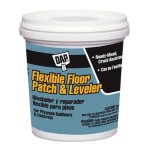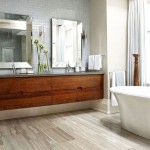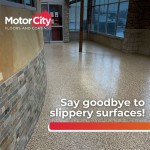How To Clean New Wood Floors
New wood floors represent a significant investment, adding beauty and value to a home. Proper maintenance from the outset is critical to preserving the floor's appearance and extending its lifespan. Cleaning new wood floors requires a gentle approach, avoiding harsh chemicals and excessive moisture that could damage the finish. This article outlines the steps necessary to effectively clean newly installed wood floors, ensuring they remain pristine for years to come.
Before commencing any cleaning routine, it is essential to understand the type of finish applied to the wood floor. Common wood floor finishes include polyurethane, varnish, lacquer, penetrating oil sealers, and wax. The cleaning methods and products suitable for one type of finish may be detrimental to another. Consulting the manufacturer's documentation or contacting the installer is highly recommended to determine the appropriate cleaning procedure for the specific floor finish.
Initial Cleaning After Installation
The first cleaning after installation is arguably the most important. During the installation process, dust, debris, and even residual adhesive can accumulate on the floor surface. This initial cleaning should be performed with extreme care to avoid scratching or dulling the new finish.
The primary tool for this initial cleaning is a soft-bristled broom or a microfiber dust mop. Sweeping or dry-mopping the floor thoroughly removes loose dirt and debris. It is important to use a dust mop that is specifically designed for hardwood floors, as some mops may have abrasive fibers that can scratch the finish. The sweeping or dry-mopping should be done in the direction of the wood grain to avoid pushing dirt into the grooves.
Once the loose debris has been removed, a damp mop can be used for a more thorough cleaning. The mop should be only slightly damp, not wet. Excess water can seep into the seams between the boards, causing them to swell and warp. It is crucial to wring out the mop thoroughly before applying it to the floor. Use a pH-neutral wood floor cleaner diluted according to the manufacturer's instructions. Avoid using general-purpose cleaners, as they often contain chemicals that can damage the finish.
Working in small sections, gently mop the floor, ensuring that the surface is evenly cleaned. Immediately dry any standing water with a clean, dry cloth. Pay particular attention to corners and edges, where dirt tends to accumulate. Continue this process until the entire floor has been cleaned.
After the initial cleaning, allow the floor to dry completely before walking on it. This may take several hours, depending on the humidity and temperature. Opening windows or using a fan can help to speed up the drying process.
Regular Maintenance Cleaning
Regular maintenance cleaning is essential for preserving the appearance of new wood floors. This routine helps to remove dirt, dust, and grime that can accumulate over time, preventing them from scratching or dulling the finish. The frequency of cleaning will depend on the amount of foot traffic and the presence of pets or children.
Daily or every other day, the floor should be swept or dry-mopped to remove loose dirt and debris. This simple step can significantly reduce the amount of grime that accumulates on the floor, minimizing the need for more intensive cleaning. Use a soft-bristled broom or a microfiber dust mop, paying attention to high-traffic areas and corners.
Once a week, or more frequently if needed, the floor should be damp-mopped. As with the initial cleaning, it is crucial to use a pH-neutral wood floor cleaner diluted according to the manufacturer's instructions. Avoid using excessive water and always wring out the mop thoroughly before applying it to the floor. Work in small sections and dry any standing water immediately.
For floors with a penetrating oil sealer or wax finish, the cleaning process may differ slightly. These finishes require specialized cleaners that are designed to replenish the oil or wax. Consult the manufacturer's instructions or contact the installer for recommendations on the appropriate cleaning products and procedures.
In addition to regular cleaning, it is important to take preventative measures to protect the wood floor from damage. Place mats at entrances to trap dirt and debris. Use furniture pads under the legs of chairs and tables to prevent scratches. Avoid wearing shoes with high heels or cleats on the floor. Trim pets' nails regularly to minimize scratching. Promptly clean up spills to prevent staining or water damage.
Addressing Specific Issues and Avoiding Damage
Despite regular cleaning and preventative measures, specific issues such as stains, scratches, or water damage may arise. Addressing these issues promptly and appropriately is crucial to preventing further damage and preserving the appearance of the floor.
Stains should be cleaned up as soon as possible to prevent them from setting into the wood. Blot the stain with a clean, dry cloth. Avoid rubbing the stain, as this can spread it and make it more difficult to remove. For water-based stains, a damp cloth may be sufficient to remove the stain. For oil-based stains, a specialized wood floor stain remover may be necessary. Always test the stain remover in an inconspicuous area first to ensure that it does not damage the finish.
Scratches can be a common issue, particularly in high-traffic areas. Minor scratches can often be buffed out with a soft cloth. For deeper scratches, a wood floor scratch repair kit may be necessary. These kits typically contain a filler that matches the color of the floor. Apply the filler to the scratch according to the manufacturer's instructions and then buff the area smooth.
Water damage is a serious concern for wood floors. If water is allowed to seep into the seams between the boards, it can cause them to swell and warp. If water damage occurs, it is important to dry the area as quickly as possible. Use a dry cloth to blot up the water and then use a fan or dehumidifier to dry the floor thoroughly. In severe cases, it may be necessary to replace the damaged boards.
Certain cleaning products and methods should be avoided to prevent damage to new wood floors. Avoid using abrasive cleaners, such as scouring pads or steel wool, as they can scratch the finish. Avoid using ammonia-based cleaners or vinegar, as they can dull the finish. Avoid using steam mops, as they can introduce excessive moisture into the floor. Avoid using waxes on floors with a polyurethane finish, as they can create a buildup that is difficult to remove.
Furthermore, it's crucial to avoid dragging heavy objects across the floor. If moving furniture, lift it rather than sliding it. If lifting is not possible, place furniture sliders under the legs to protect the floor. Avoid wearing shoes with sharp objects embedded in the soles, as these can easily scratch the finish.
Sunlight can also affect the color of wood floors over time. Excessive exposure to direct sunlight can cause the wood to fade or change color. Use curtains or blinds to protect the floor from direct sunlight, especially during the hottest part of the day. Rotate rugs periodically to ensure even exposure to sunlight.
Proper cleaning and maintenance are essential for preserving the beauty and longevity of new wood floors. By following these guidelines, homeowners can ensure that their floors remain pristine for years to come. Regular sweeping or dry-mopping, damp-mopping with a pH-neutral wood floor cleaner, and prompt attention to stains and scratches are key to maintaining the appearance of new wood floors. Avoiding harsh chemicals, excessive moisture, and abrasive cleaning methods is crucial to preventing damage. By implementing these practices, homeowners can enjoy the beauty and value of their new wood floors for many years.

How To Clean Hardwood Floors Reviews By Wirecutter

How To Clean Hardwood Floors Without Damaging Them

How To Clean And Shine Hardwood Floors Fast Easy Tips

How To Clean Hardwood Floors And Ensure Their Durability

How To Clean Hardwood Floors Like A Pro

The 5 Best Ways To Clean Hardwood Floors Chet S Cleaning

Easy Guide How To Clean Hardwood Floors Effectively

The Right Way To Clean Wood Floors

Easy Guide How To Clean Hardwood Floors Effectively

How To Get Drywall Dust Out Of A Wood Floor Deep Cleaning Grain







